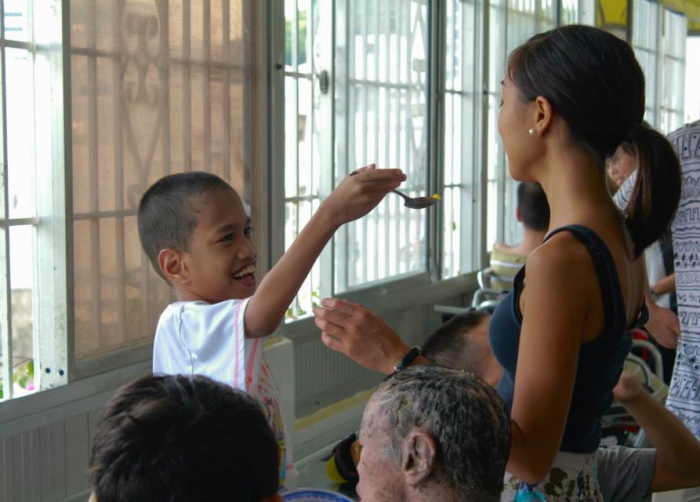The Laspa Action Grants were established to provide opportunities for students to transform knowledge, passion, and ideas into action; demonstrate creative and effective problem solving; create partnership(s) in the public or private sector; and produce outcomes that make a positive impact.
Students partnered with faculty advisors to submit grant proposals, and the Laspa Center for Leadership steering committee, composed of students, faculty, staff, alumnae, and trustees, narrowed down the submissions to six finalists, and chose two grant recipients. Ultimately, all six proposals were funded through the generosity of trustees, staff, and friends of the College.
Documenting the Ongoing Effects of Agent Orange
By Julianne Fu ’16
More than 40 years after the fall of Saigon, the tragic consequences of war are still all too apparent in Vietnam. Maya Espiritu ’16 used her Laspa Action Grant this past summer to document the ongoing effects of Agent Orange, as well as other chemical weapons used during the Vietnam War, on today’s children in Vietnam. In collaboration with University of California, Irvine’s Southeast Asian Archive, Espiritu traveled to the Southeast Asian country, where she produced a series of photographs of the children she encountered there. Through her project, she hopes to bring public awareness to the lasting, drastic effects of chemical warfare on this youngest generation of Vietnamese.
“More explosives were dropped on Vietnam, a country two-thirds the size of California, than in all of World War II. Yet post-1975 discussions of the Vietnam War in the United States often skip over this devastating history. My research was set against this forgetting of the Vietnamese people,” says Espiritu.
Tumors, birth defects, rashes, and cancer are just a few of the health issues that have been caused by the release of between 72 and 100 million liters of toxic chemicals during the Vietnam War. A mere 85 grams of dioxin, a key component in Agent Orange, can kill a population of eight million. During the war, the U.S. sprayed 170 kilograms of dioxin over the mountains, plains, crops, forests, and water sources of Vietnam, affecting 3,851 communes and approximately 4.8 million citizens.
As part of her project, Espiritu conducted historical research at the War Remnants Museum in Saigon. She also volunteered at the Tu Du Peace Village, a rehabilitation center for orphaned children whose lives have been drastically impacted by the lasting effects of Agent Orange in the environment. There, she spent time with the children, reading, drawing, and playing sports, as well as assisting those with physical handicaps.
“While the children I met were not directly exposed to Agent Orange, they have been exposed to it either through tainted water sources or their afflicted parents,” explains Espiritu.
“Many of those exposed to Agent Orange have suffered from severe health issues such as liver cancer, liver metabolism disorder, cleft palate, club foot, muscle malformations, developmental disabilities, neural tube defects, and paralysis. For many of these children, living independently will most likely never be an option.”
Espiritu plans to use her research and photographs to present her interpretation of the children’s lives in the village via a digital archive or exhibition in collaboration with the Southeast Asian Archive. She wants to demonstrate how Agent Orange and other chemical weapons continue to affect the lives of children in Vietnam, but she hopes to highlight how these youths’ spirits thrive in spite of the challenges they face.


